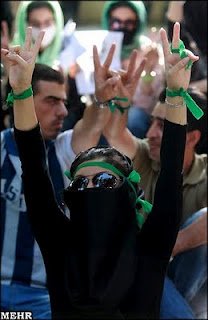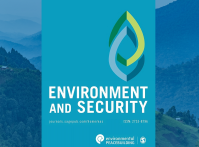-
Demography and Democracy in Iran
August 12, 2009 By Brian Klein President Mahmoud Ahmadinejad might have blamed sinister “foreign powers” for fomenting post-election civil unrest in Iran, but some analysts have fingered another culprit: demography. According to Farzaneh (Nazy) Roudi, program director for the Middle East and North Africa at the Population Reference Bureau, two phenomena “provide a backdrop for understanding Iran’s current instability.” First is the country’s youthful population age structure, or “youth bulge”; over 30 percent of Iranians are between the ages of 15 and 29, and 60 percent are under the age of 30. Second is Iran’s surprisingly comprehensive family planning program, which has empowered women to make their own reproductive choices and enter higher education en masse.
President Mahmoud Ahmadinejad might have blamed sinister “foreign powers” for fomenting post-election civil unrest in Iran, but some analysts have fingered another culprit: demography. According to Farzaneh (Nazy) Roudi, program director for the Middle East and North Africa at the Population Reference Bureau, two phenomena “provide a backdrop for understanding Iran’s current instability.” First is the country’s youthful population age structure, or “youth bulge”; over 30 percent of Iranians are between the ages of 15 and 29, and 60 percent are under the age of 30. Second is Iran’s surprisingly comprehensive family planning program, which has empowered women to make their own reproductive choices and enter higher education en masse.“Youth and women are the two agents of change in the country,” said Robin Wright, Public Policy Scholar at the Woodrow Wilson Center, in an interview with The New Security Beat. “The youth bulge and the education of women create a very energetic dynamic that defines politics, the economy, security, and social mores in Iran,” she continued.
This dynamic spurred the post-election protests, a movement that Roudi labels “a manifestation of underlying frustrations” with social and political restrictions, as well as high unemployment. A significant cross-section of the Iranian population—led by but not restricted to young people and women—took to the street, demanding that their voices be heard.
But what were they calling for? And what chance do they have to succeed?
“Youth is clearly Iran’s future,” said Wright. However, she cautioned against making assumptions about what young people desire. “They want their votes to be counted, they want a normal state, and they want to work within the international order,” she explained, “[but] they’re not walking away from the Islamic Republic—not yet, at least.”
 Unrest is common in youth-bulge countries, which Foreign Policy’s Richard Cincotta explains are “two-and-a-half times more vulnerable to the onset of political violence or civil conflict than relatively mature populations.” However, Cincotta emphasizes that such movements rarely if ever lead to stable liberal democracy, drawing comparisons between Iran’s current demographic and political situation and that of China twenty years ago—at the time of Tiananmen Square.
Unrest is common in youth-bulge countries, which Foreign Policy’s Richard Cincotta explains are “two-and-a-half times more vulnerable to the onset of political violence or civil conflict than relatively mature populations.” However, Cincotta emphasizes that such movements rarely if ever lead to stable liberal democracy, drawing comparisons between Iran’s current demographic and political situation and that of China twenty years ago—at the time of Tiananmen Square.Population Action International’s Elizabeth Leahy agrees. Countries with a youthful age structure are “significantly more prone to conflict and much less democratic, on average, than those that had advanced further along the demographic transition,” she says in an article in ECSP Report 13.
However, the success of Iran’s award-winning family planning program—which requires all young couples to undergo a family planning course and makes contraception freely available to the public—has set the country “well on its way to a more balanced age structure,” Leahy reports. And “a mature age structure,” Cincotta relates, “tends to serve as a statistical bellwether for durable liberal democracy.”
So did the clerics unwittingly ensure the elevation of the Republic over Islam by making family planning prevalent in Iranian society?
“I’m very optimistic” that Iran will eventually achieve democratic reform, Wright concluded. “But the question is—how long is ‘eventually’?”
Top photo: A protest in front of the Kluczynski Federal Building Plaza in Chicago on June 16, 2009, soon after the disputed Iranian presidential election. Courtesy Flickr user JSisson.
Second Photo: A young female protester flashes the iconic “V,” a sign of solidarity for supporters of opposition candidate Mir-Hossein Mousavi. Courtesy Flickr user .faramarz.
 A Publication of the Stimson Center.
A Publication of the Stimson Center.

 President Mahmoud Ahmadinejad might have blamed sinister “
President Mahmoud Ahmadinejad might have blamed sinister “ Unrest is common in youth-bulge countries, which Foreign Policy’s Richard Cincotta explains are “
Unrest is common in youth-bulge countries, which Foreign Policy’s Richard Cincotta explains are “




